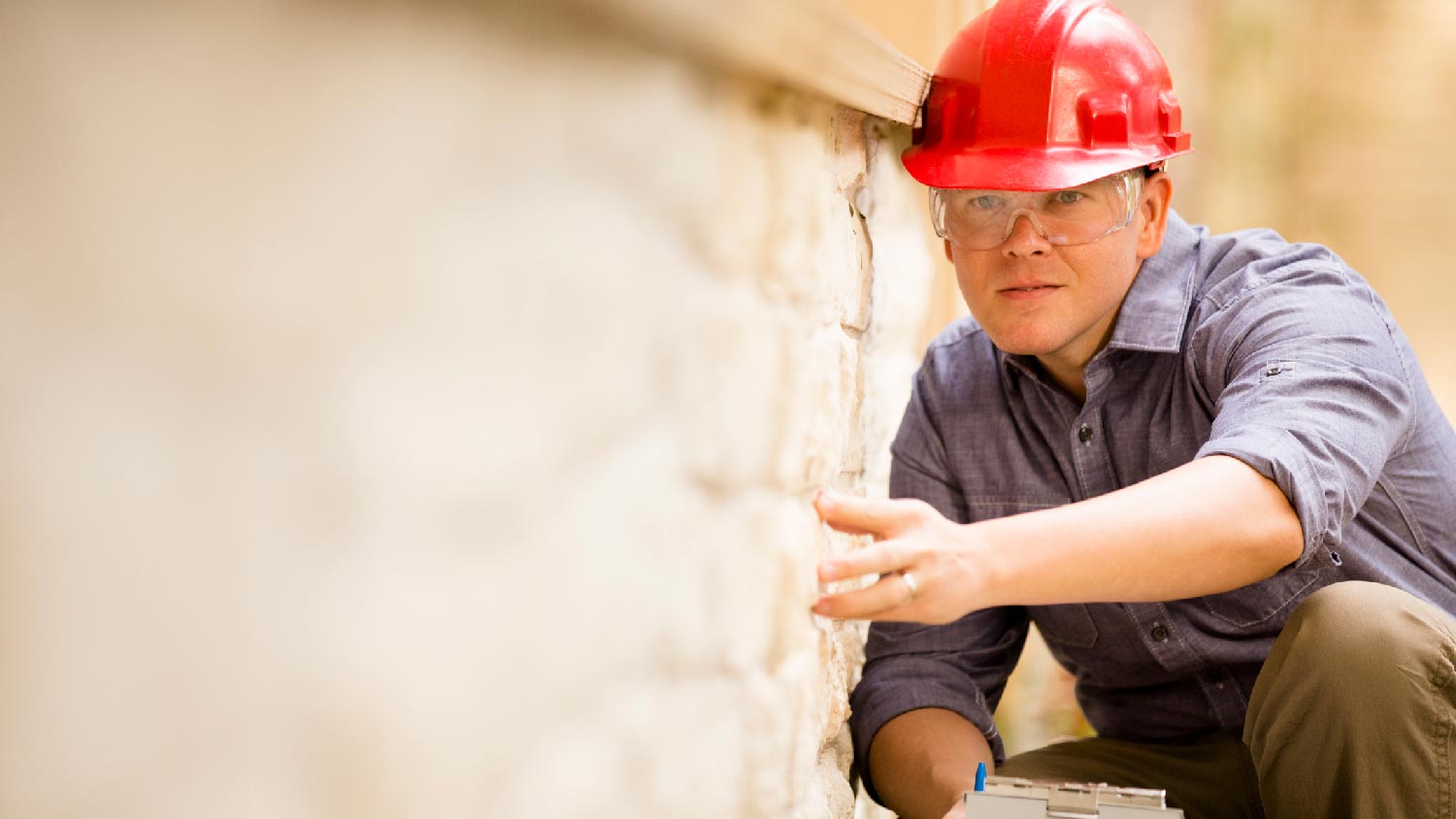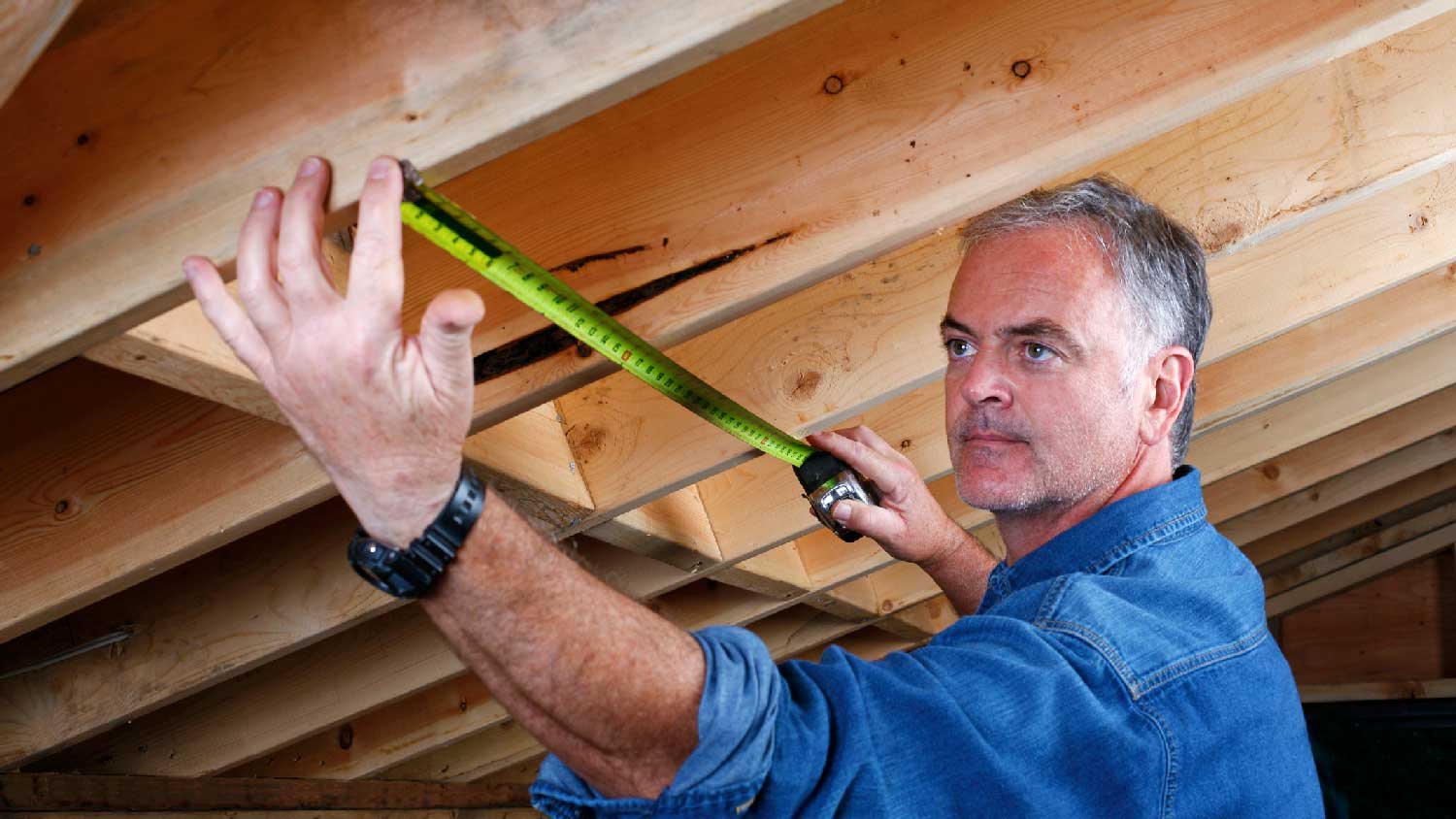
Drone roof inspection costs vary depending on the roof’s size, complexity, and material. Use this guide to budget for a drone roof inspection.
Dig deep into the foundational differences between structural and home inspections


A structural inspection focuses on the load-bearing structural components of a home.
A home inspection offers a surface-level review of a home’s overall condition.
The two types of inspections are performed by different licensed professionals.
Potential home buyers often get both inspections done before closing on a deal.
A couple of inspections can save you from dealing with big problems in the long run, but not all inspections serve the same purpose. While some people may think that a structural inspection and a home inspection are identical and interchangeable, they have several noteworthy differences. Whether you’re ready to buy a new home or you’re considering a major addition to your existing house, learn how structural inspections and home inspections differ in scope and benefits.

A structural inspection zeroes in on the structural integrity of a home. A structural engineer looks closely at load-bearing elements to assess whether there are possible safety hazards. By contrast, a home inspection is more general in scope, offering a surface-level evaluation of a home’s overall condition. A home inspection looks at the structure, but not to the level of detail of a structural inspection.
These are the main differences between what a structural inspection is and what a home inspection is. They are performed by different professionals, can take different amounts of time, and can cost different amounts of money.
| Differences | Structural Inspection | Home Inspection |
|---|---|---|
| Area of focus | Structural integrity | General condition |
| Level of detail | Specific | Broad |
| Who to hire | Structural engineer | Home inspector |
| Time it takes | 1 – 3 hours | 2 – 3 hours |
| Typical cost | $300 – $3,000 | $200 – $500 |
The terms “foundation inspection” and “structural inspection” are sometimes used interchangeably. Structural engineers have specific training on how to assess for issues relating to load-bearing walls, foundations, and other structural elements of a building. They look at a building’s ability to carry its design load safely and effectively.
This includes factoring in environmental factors, like if a home is located in an area at risk of earthquakes or hurricanes. The structural integrity of homes in hilly areas or in regions with different climates will have different requirements. Structural engineers can identify possible weak points and offer suggestions for how to address them.

Whereas a structural inspection digs deep into the structural integrity of a building, a standard home inspection is much broader in scope. It looks at the overall condition of the home at more of a surface level.
This is largely a surface inspection, so don’t expect a home inspector to look behind walls or under floors. It is non-invasive but can help reveal hidden problems. Depending on what they find, they may suggest hiring a specialist to investigate further, like finding a structural engineer to inspect the foundation. Structural issues are one of the most common things that fail a home inspection.
A structural inspection and a home inspection will each have a different process since they’re looking at different things. There are some similarities, but a structural inspection will be much more focused on looking for signs of structural damage. It’s a good idea to be present at a home inspection and a structural inspection, since the inspector may have questions or need access only the homeowner can provide.
A licensed structural engineer will focus on the load-bearing elements of a home to assess its overall structural integrity. As they inspect the structure of the building, they may look for:
Signs of foundation issues, like settling, water ingress, heaving, or cracking
Wide cracks and other major defects to exterior walls, especially around door and window frames
Visible issues with load-bearing walls, such as cracking or warping
Structural damage to studs, joists, and beams caused by rot or termite infestation
Bulging or warping of the home’s floors and walls
The ability of the roof’s structure to withstand high winds or heavy snow loads
The home inspection report you receive will generally include information about the following areas and aspects of the property:
Apparent structural soundness
Signs of water damage
Roofing system
Electrical system
HVAC system
Plumbing
Floors, walls, and ceilings
Kitchens and bathrooms
Windows and doors
Major appliances and fixtures
A home inspection costs an average of $300 to $425, although you’ll pay more for a large house or if you live in an area with a high cost of living. The cost of a home inspection is worth it when you’re listing your home for sale, purchasing a new home, or appraising your home’s value.
An inspection from a structural engineer costs between $350 and $800 on average and may increase depending on the size of your home or the extent of the suspected structural issues. If you see signs of structural damage, investing in a structural inspection can save you a lot of money in costly repairs later on.
Home inspections cover many details within your home, while structural inspections focus on specific structural concerns. A home inspection can often identify signs of potential structural damage, but it won’t provide an in-depth analysis of the problem or recommendations for a fix. If your home inspection identifies possible structural issues, get a structural inspection to confirm the problem and provide recommended next steps.
Structural inspections are conducted by licensed structural engineers who have extensive training and experience in identifying, analyzing, and fixing structural issues. Hire a structural engineer if you have concerns about your foundation, notice any warning signs of structural damage, are planning renovations or an addition, or think your home’s structural integrity may be compromised after a natural disaster.
When it’s time to hire a home inspector, look for a licensed and qualified professional with plenty of experience. Because home inspections cover so much, the accuracy and quality of the inspection will depend on the inspector. Get a home inspection before listing your home or during the appraisal process to identify anything that may affect your home’s value if not repaired or replaced.
"The biggest red flags are structural and foundation issues since they are the most costly and difficult to remediate. Pay attention to the age and condition of big-ticket items like the roof, HVAC, plumbing, and electrical systems. Having to repair or replace any of those items can be very costly."
— Robert Washington, Founder at Savvy Buyers Realty
A general home inspection is a good place to start, identifying possible areas of concern that may justify further investigation. If the home inspection raises concerns about the foundation or framing of the house, a structural inspection is warranted.
Some local home inspection companies may offer both types of inspections. Even if the home inspection doesn’t sound the alarm, a structural inspection is a worthwhile investment to ensure your home is in good condition.
From average costs to expert advice, get all the answers you need to get your job done.

Drone roof inspection costs vary depending on the roof’s size, complexity, and material. Use this guide to budget for a drone roof inspection.

If you’re buying a home, having an inspection offers reassurance that it’s in good condition. How much a home inspection costs varies depending on the home's size, age, condition, and location.

An inspection tells you a lot about the house you’ll buy, but should you use a realtor’s home inspector? Learn the pros and cons of using your agent’s choice.

Finding the right home inspector is crucial for selling or buying property and keeping up with necessary repairs. Follow our guide to pick the right one.

Learn how long a home inspection takes with this easy guide. Make the process smooth and stress-free by preparing for the home inspection.

The buyer is often who pays for the home inspection, but proactive sellers might also decide to foot the bill. Learn why in this complete guide.